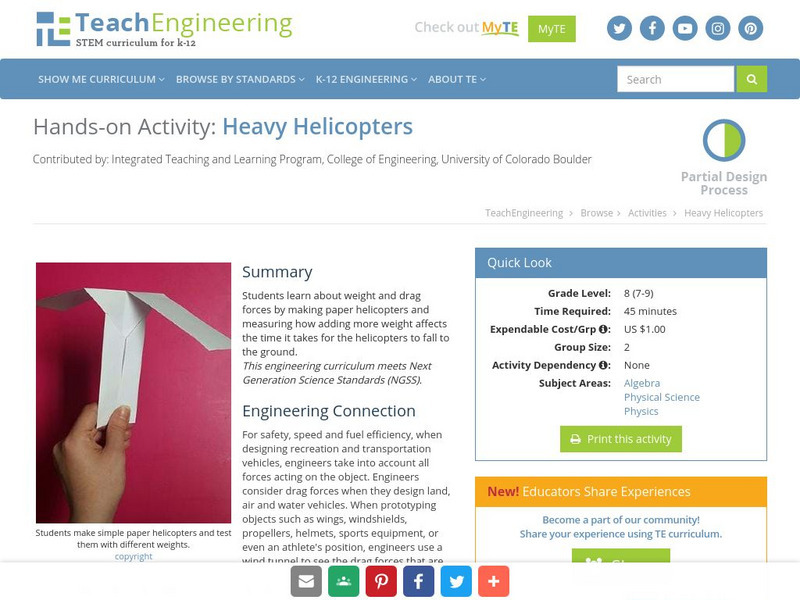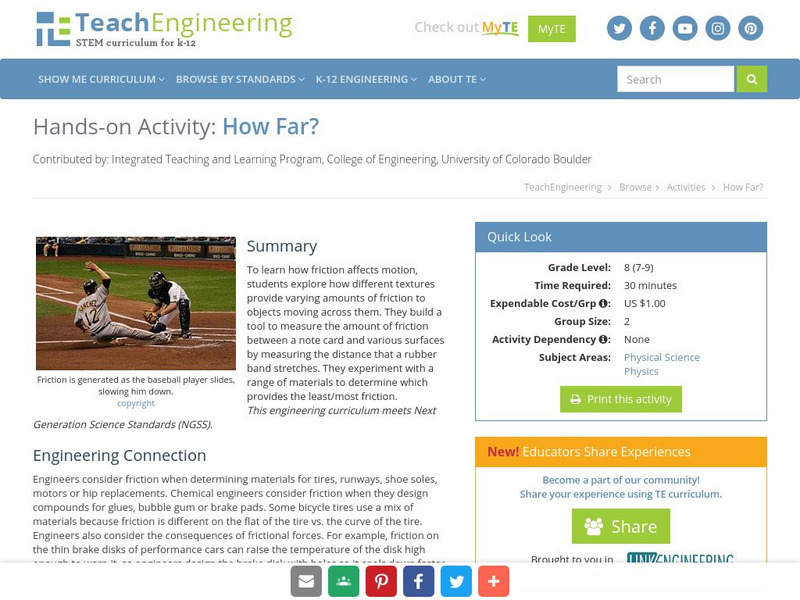Sophia Learning
Sophia: Newton's Universal Law of Gravitation: Lesson 3
This lesson will describe Newton's Universal Law of Gravitation. It is 3 of 3 in the series titled "Newton's Universal Law of Gravitation."
Sophia Learning
Sophia: Practice Drawing Free Body Diagrams: Lesson 1
This lesson provides the learner with example problems on drawing free-body diagrams. It is 1 of 2 in the series titled "Practice Drawing Free-Body Diagrams."
Sophia Learning
Sophia: Practice W/ Normal Forces: Lesson 1
This lesson provides the learner with example problems on normal forces. It is 1 of 2 in the series titled "Practice w/ Normal Forces."
Sophia Learning
Sophia: What Are Forces?
This lesson will introduce forces and give an overview of some different types of forces.
CK-12 Foundation
Ck 12: Work
[Free Registration/Login may be required to access all resource tools.] In this online lesson students will learn to calculate work and explain how it relates to the overarching idea of energy.
Sophia Learning
Sophia: Calculating Forces: Lesson 2
This lesson will explain how to calculate net forces on an object being pushed or pulled. It is 2 of 4 in the series titled "Calculating Forces."
Sophia Learning
Sophia: Calculating Forces: Lesson 3
This lesson will explain how to calculate net forces on an object being pushed or pulled. It is 3 of 4 in the series titled "Calculating Forces."
Other
How to smile.org: Building Pulleys
An activity where students use pulley systems to pick up a paint can and move an eraser from the ground to the top of a desk. After completing this activity, students will understand how pulley systems can help us do work.
Educaplus (Jesús Peñas Cano)
Educaplus: Cuerpos Ligados en Equilibrio
Learn how to make diagrams of forces by placing the forces to act on the boxes.
OpenStax
Open Stax: Development of Force Concept
In the following interactive students will begin to understand the definition of force.
Educaplus (Jesús Peñas Cano)
Educaplus: Tipos De Fuerzas [In Spanish]
This is a short demonstration to learn about the different types of forces.
TeachEngineering
Teach Engineering: Fun With Bernoulli
While we know there is air around us all the time, we normally do not notice the air pressure. The purpose of this is activity is to use Bernoulli's Principle to manipulate air pressure so we can see its influence on the objects around us.
TeachEngineering
Teach Engineering: Physics Tug of War
In this activity, students will learn about Newton's 2nd Law of Motion. They will learn that the force required to move a book is proportional to the weight of the book. Engineers use this relationship to determine how much force they...
TeachEngineering
Teach Engineering: Too Much Pressure!
In this activity, students learn how engineers design faucets. Students will learn about water pressure by building a simple system to model faucets and test the relationship between pressure, area and force. This is a great outdoor...
TeachEngineering
Teach Engineering: Heavy Helicopters
Students learn about weight and drag forces by making paper helicopters and measuring how adding more weight affects the time it takes for the helicopters to fall to the ground.
TeachEngineering
Teach Engineering: How Far?
To learn how friction affects motion, students explore how different textures provide varying amounts of friction to objects moving across them. They build a tool to measure the amount of friction between a note card and various surfaces...
TeachEngineering
Teach Engineering: Newton Rocket Car
The purpose of this activity is to demonstrate Newton's third law of motion - which states that every action has an equal and opposite reaction - through a small wooden car. The Newton cars show how action/reaction works and how the mass...
TeachEngineering
Teach Engineering: The Squeeze Is On
Students will learn about the force of compression and how it acts on structural components through a hands-on group project. Using everyday products such as paper, toothpicks, and tape they will construct a structure that will support...
TeachEngineering
Teach Engineering: May the Force Be With You: Lift
Students revisit Bernoulli's Principle (Lesson 1 of the Airplanes unit) and learn how engineers use this principle to design airplane wings. Airplane wings create lift by changing the pressure of the air around it. This is the first of...
TeachEngineering
Teach Engineering: Art in Engineering Moving Art
Students learn how forces are used in the creation of art. They come to understand that it is not just bridge and airplane designers who are concerned about how forces interact with objects, but artists as well.
TeachEngineering
Teach Engineering: Bridging the Gaps
Students are presented with a brief history of bridges as they learn about the three main bridge types: beam, arch and suspension. They are introduced to two natural forces - tension and compression - common to all bridges and...
TeachEngineering
Teach Engineering: Work and Power: Waterwheel
Investigating a waterwheel illustrates to students the physical properties of energy. They learn that the concept of work, force acting over a distance, differs from power, which is defined as force acting over a distance over some...
TeachEngineering
Teach Engineering: How a Faucet Works
Young scholars learn about the underlying engineering principals in the inner workings of a simple household object - the faucet. Students use the basic concepts of simple machines, force and fluid flow to describe the path of water...
TeachEngineering
Teach Engineering: What Makes Airplanes Fly?
Learners begin to explore the idea of a force. To further their understanding of drag, gravity and weight, they conduct activities that model the behavior of parachutes and helicopters. An associated literacy activity engages the class...


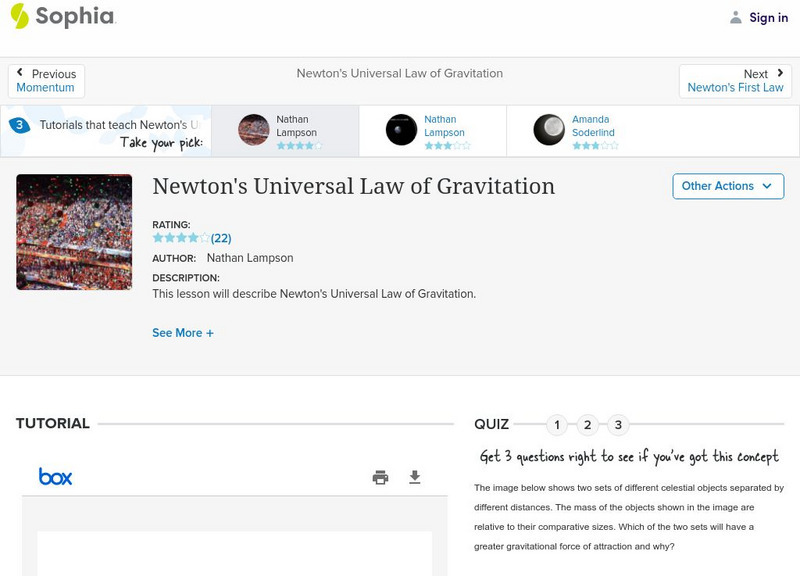



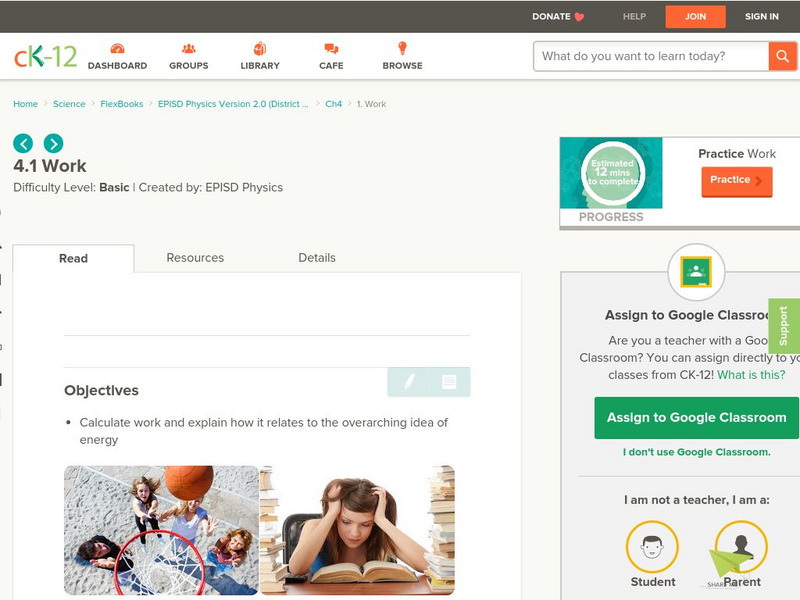
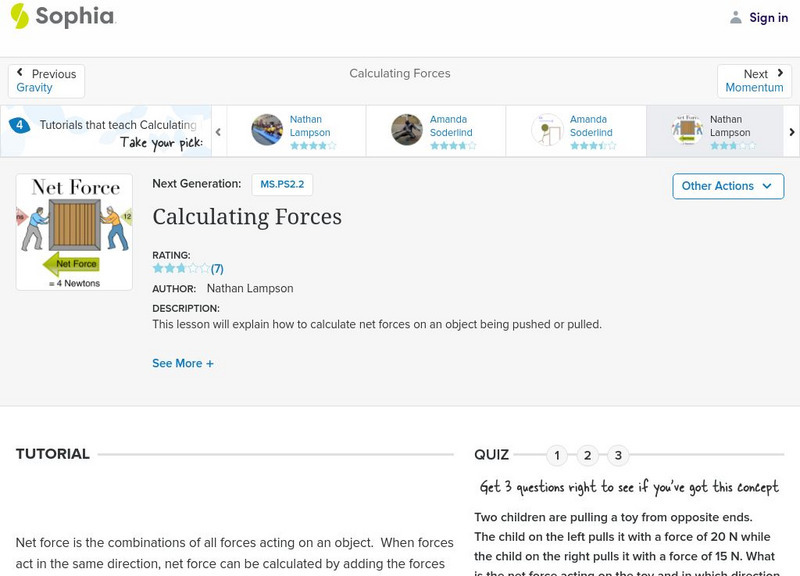

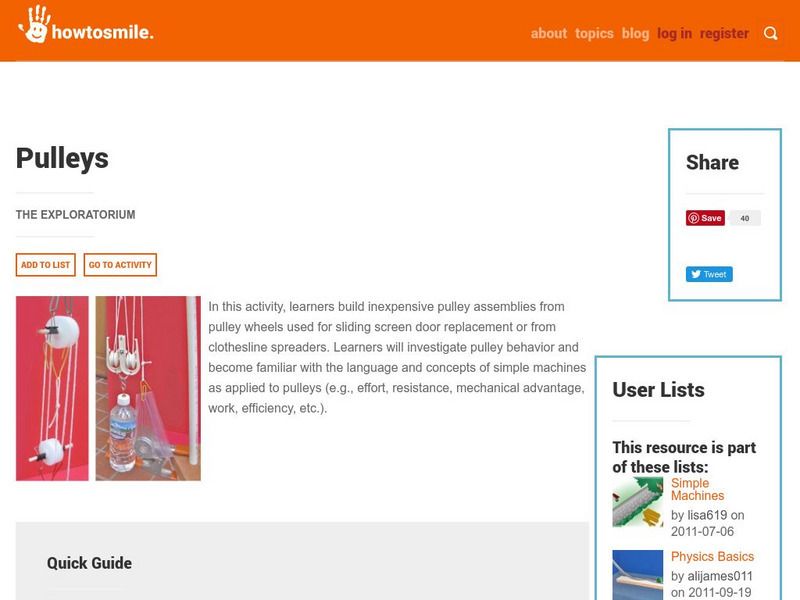
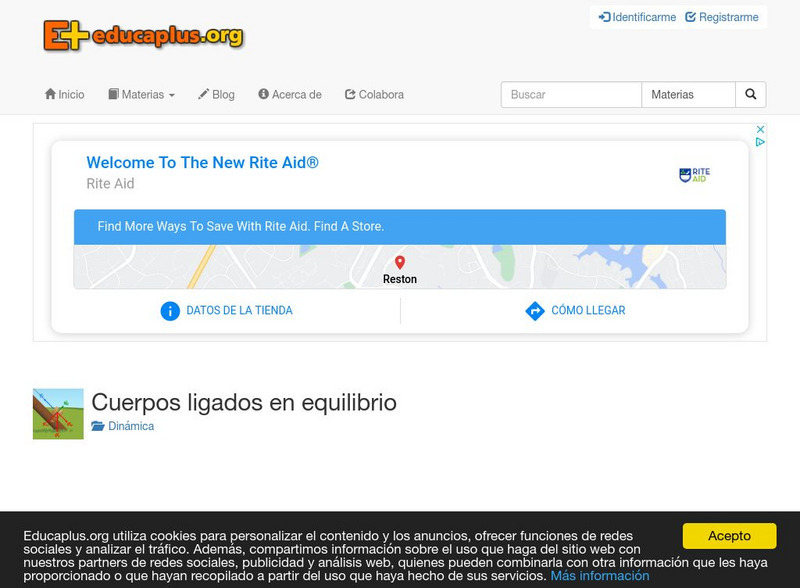

![Educaplus: Tipos De Fuerzas [In Spanish] Activity Educaplus: Tipos De Fuerzas [In Spanish] Activity](https://content.lessonplanet.com/knovation/original/180056-939d907b9dcab9b517445d52cee25114.jpg?1661772969)



